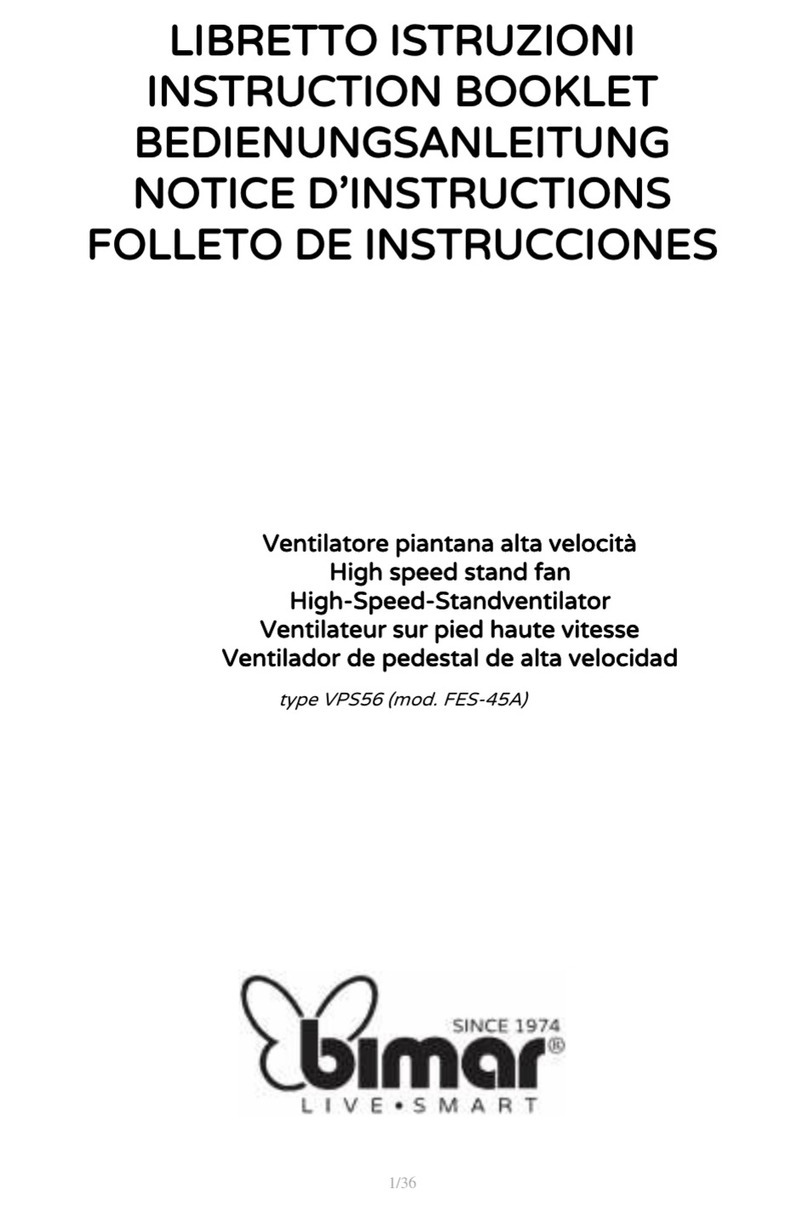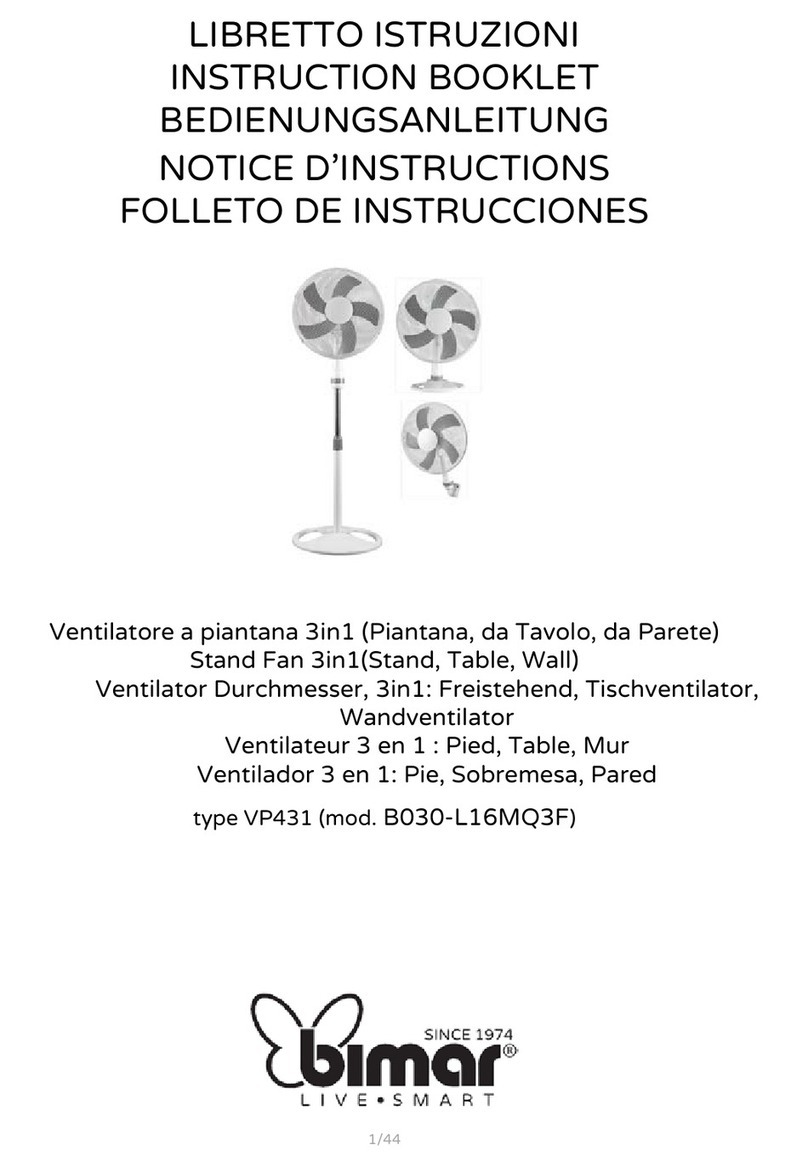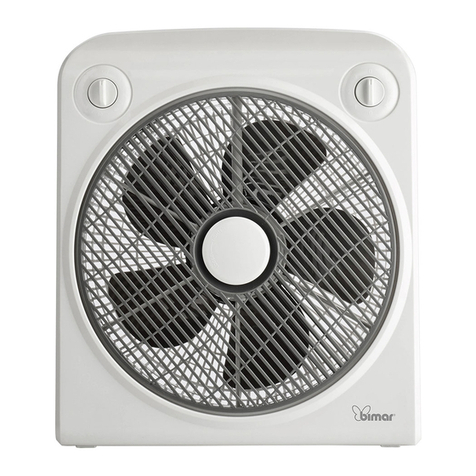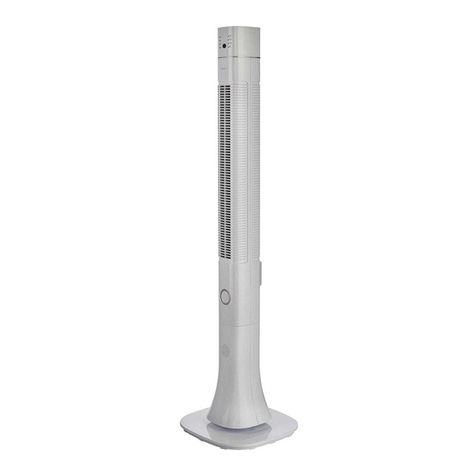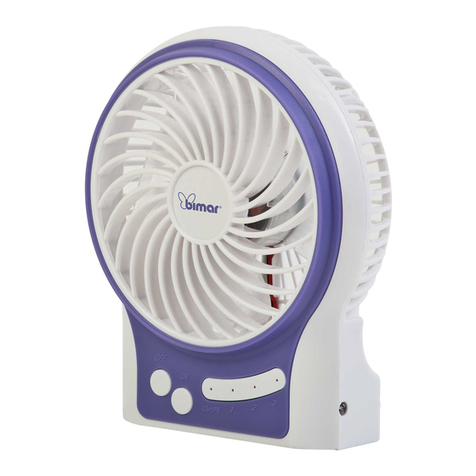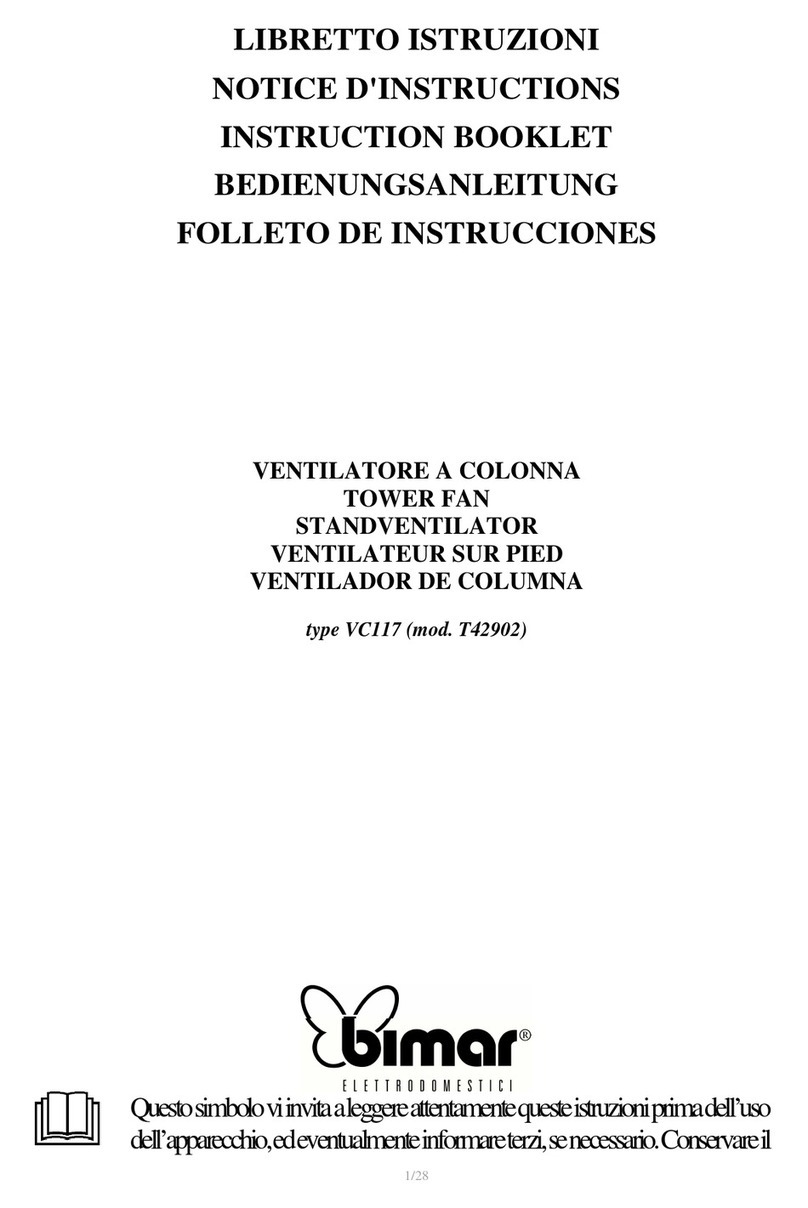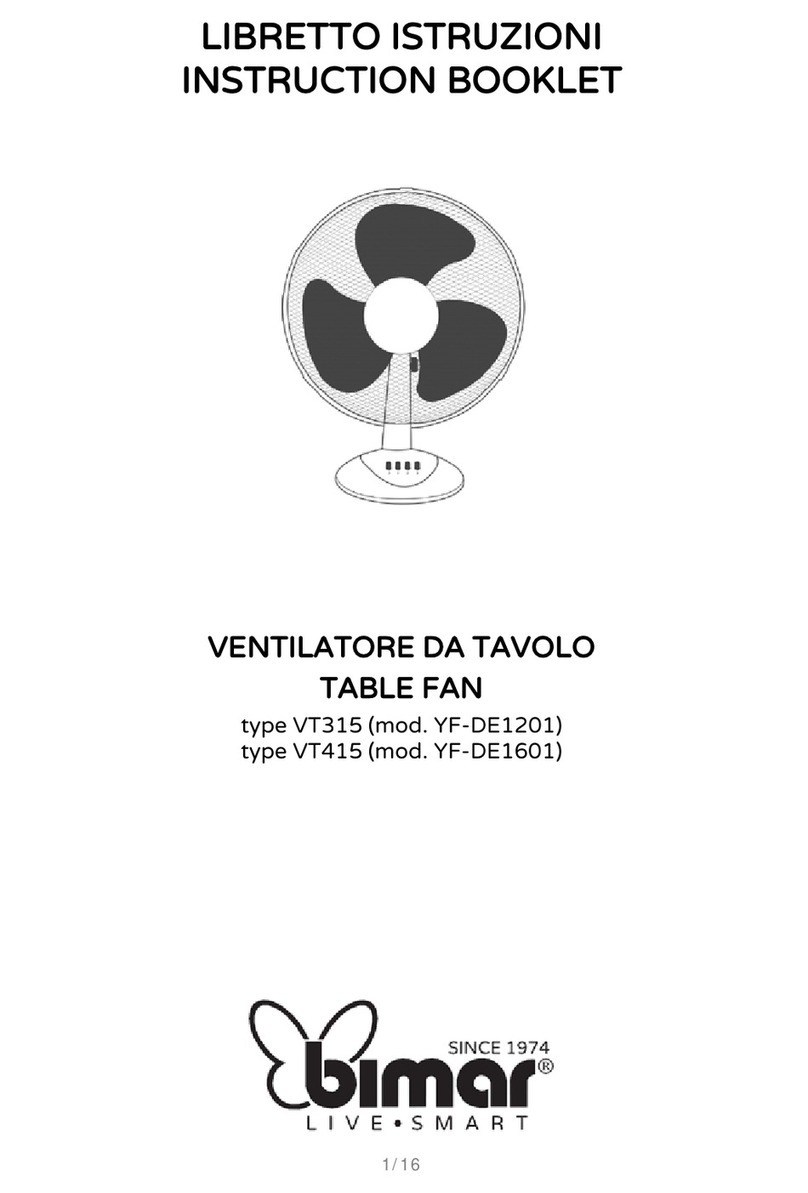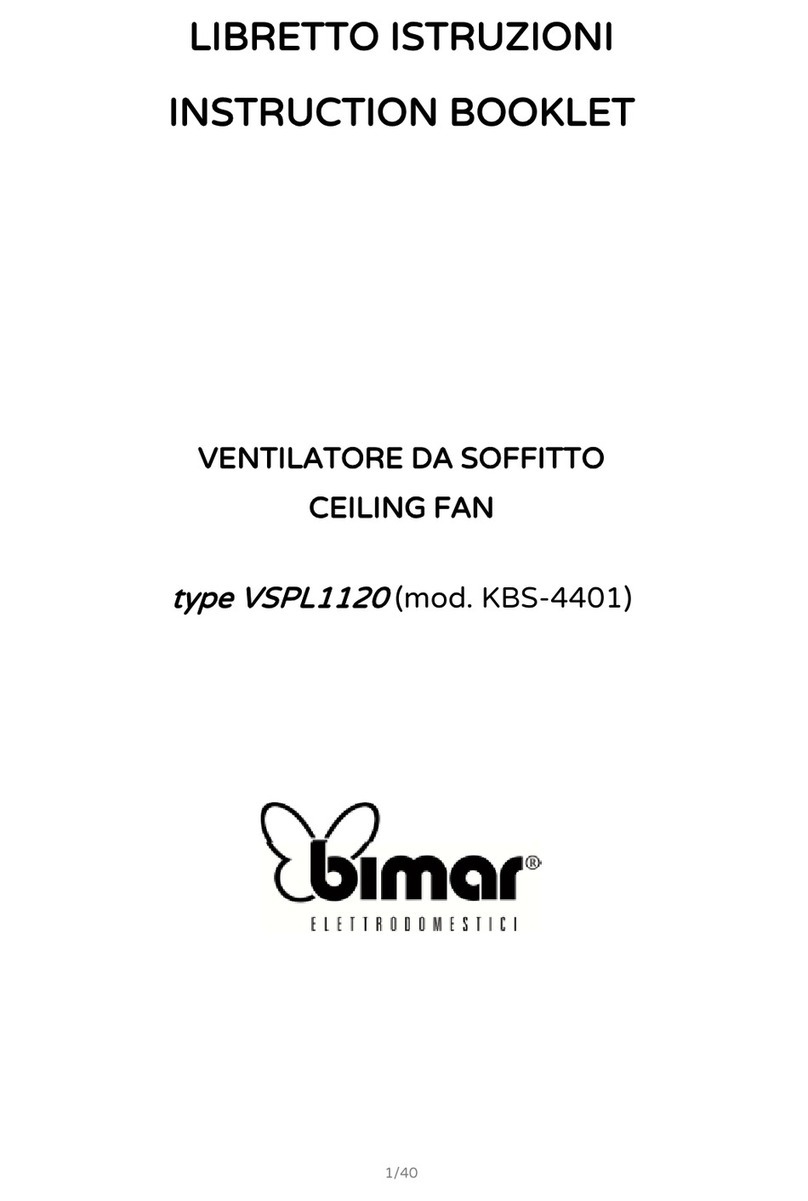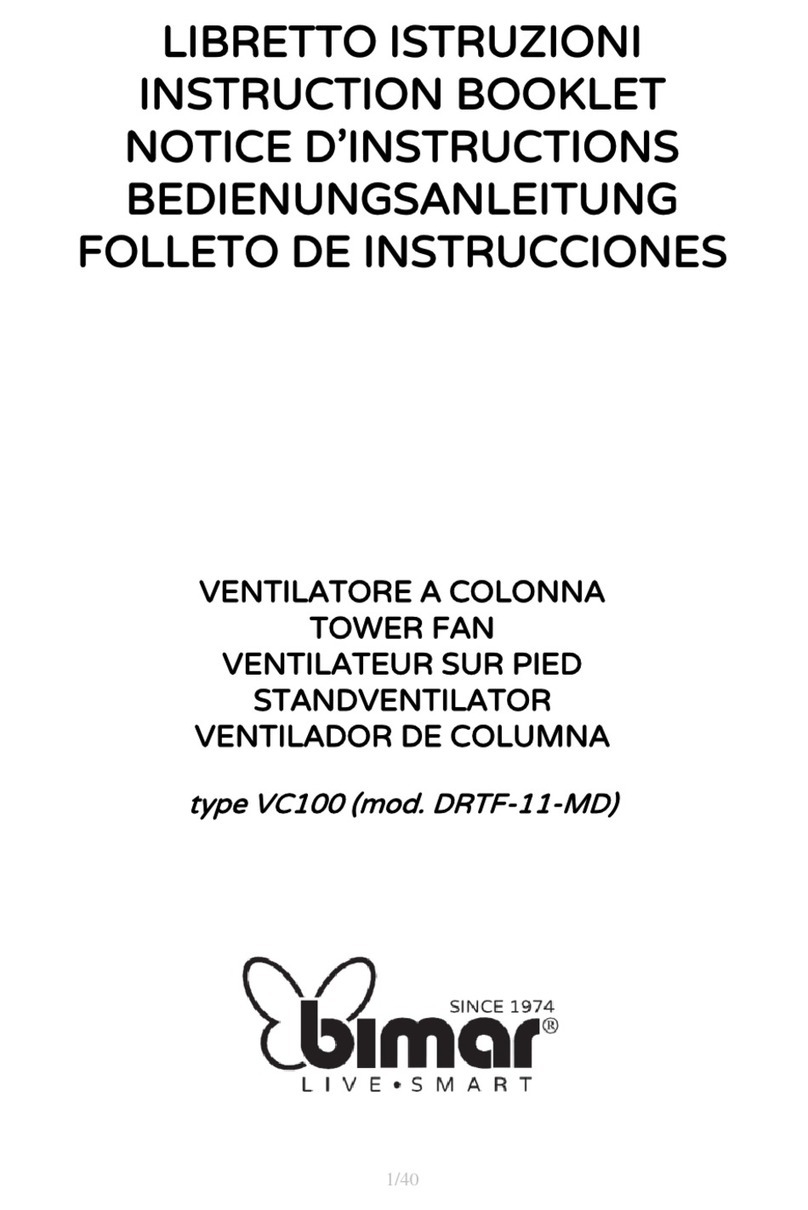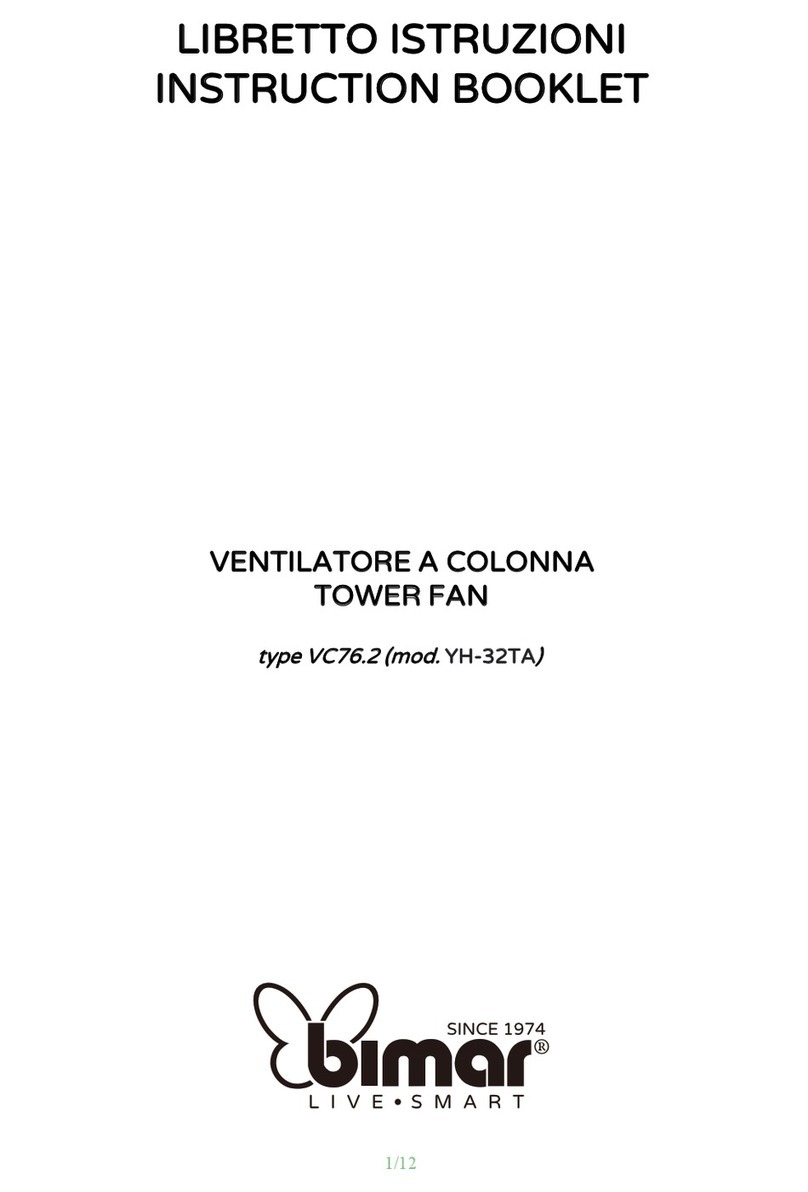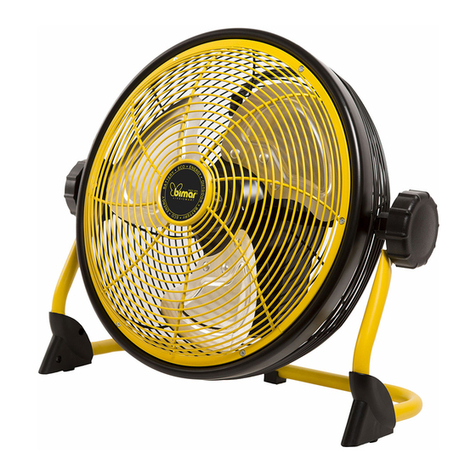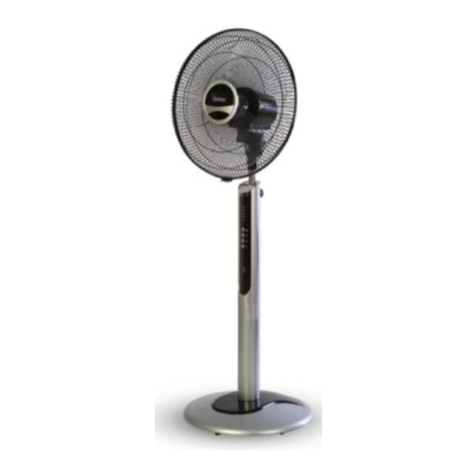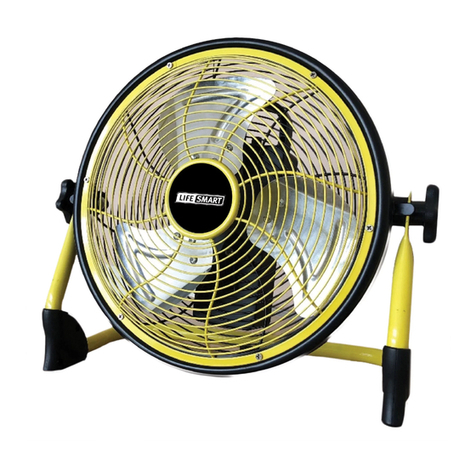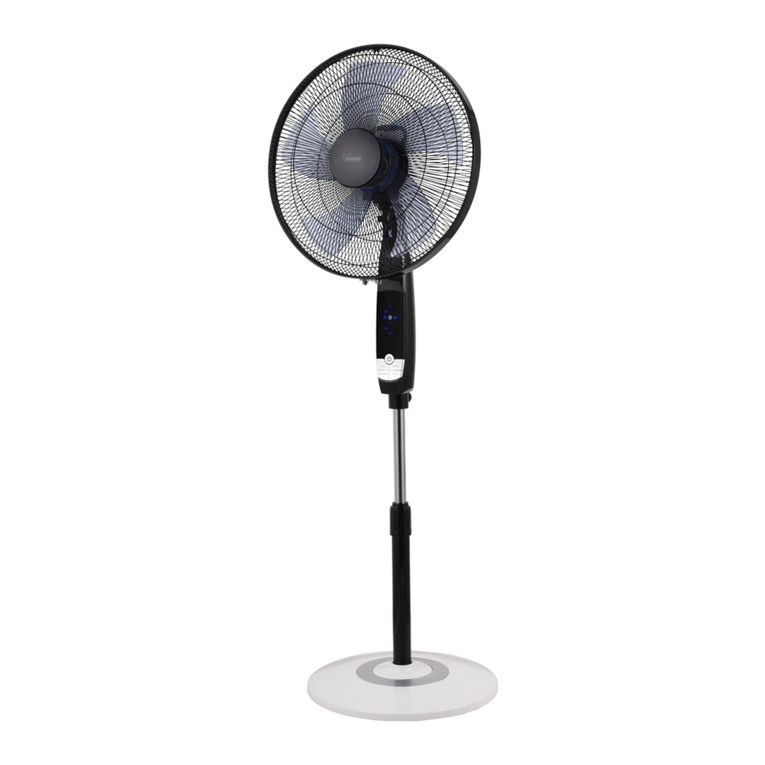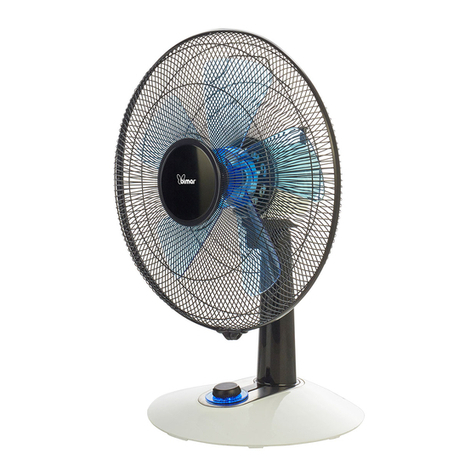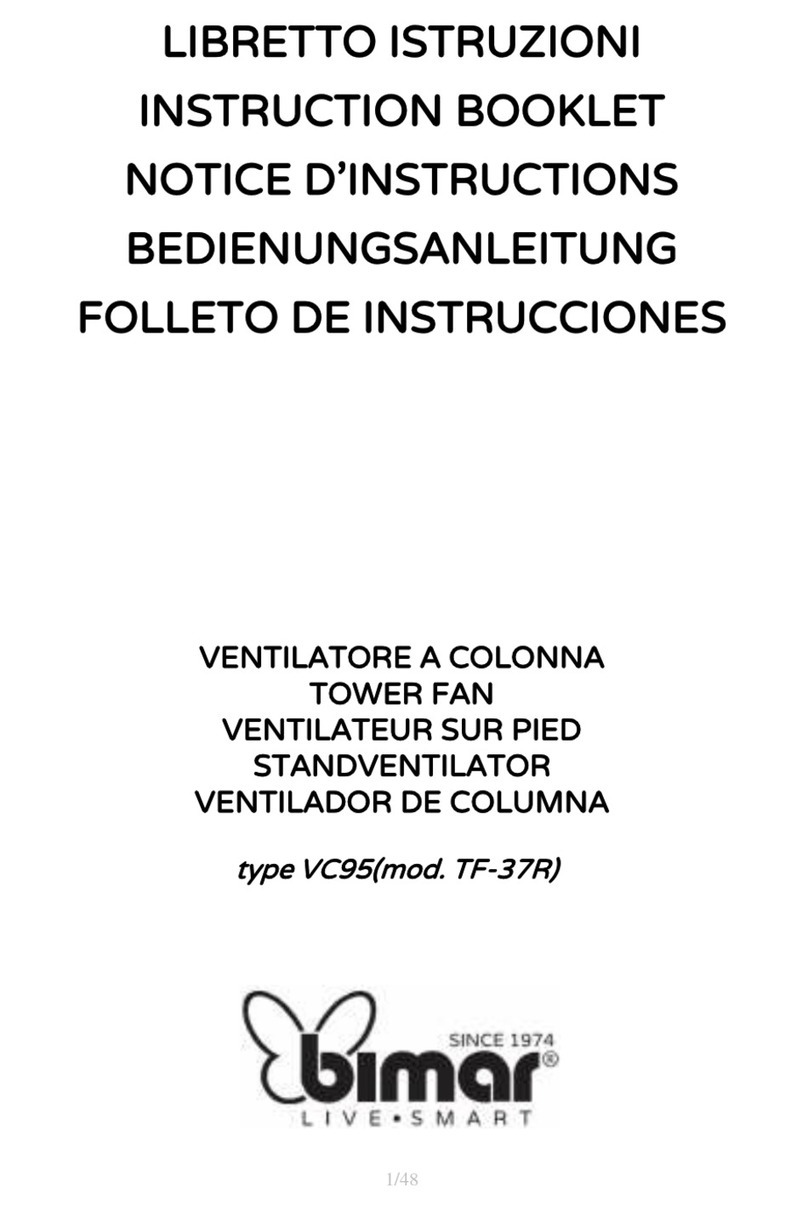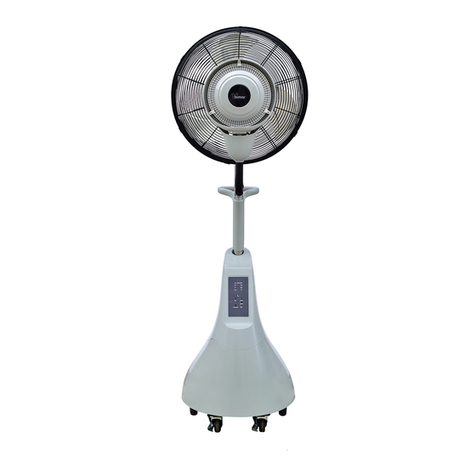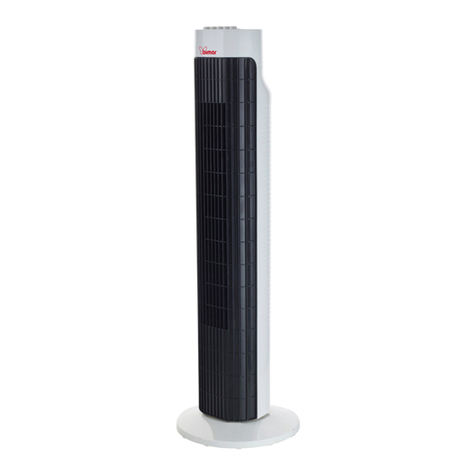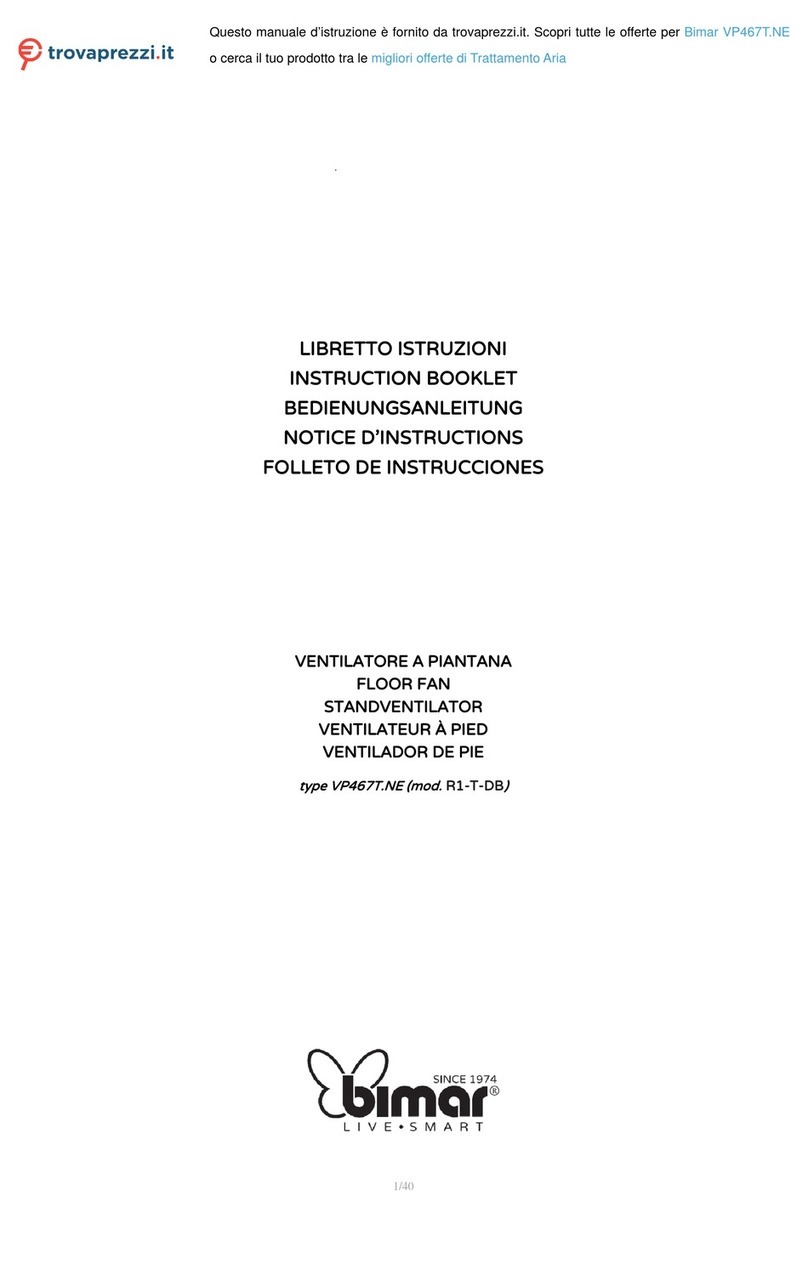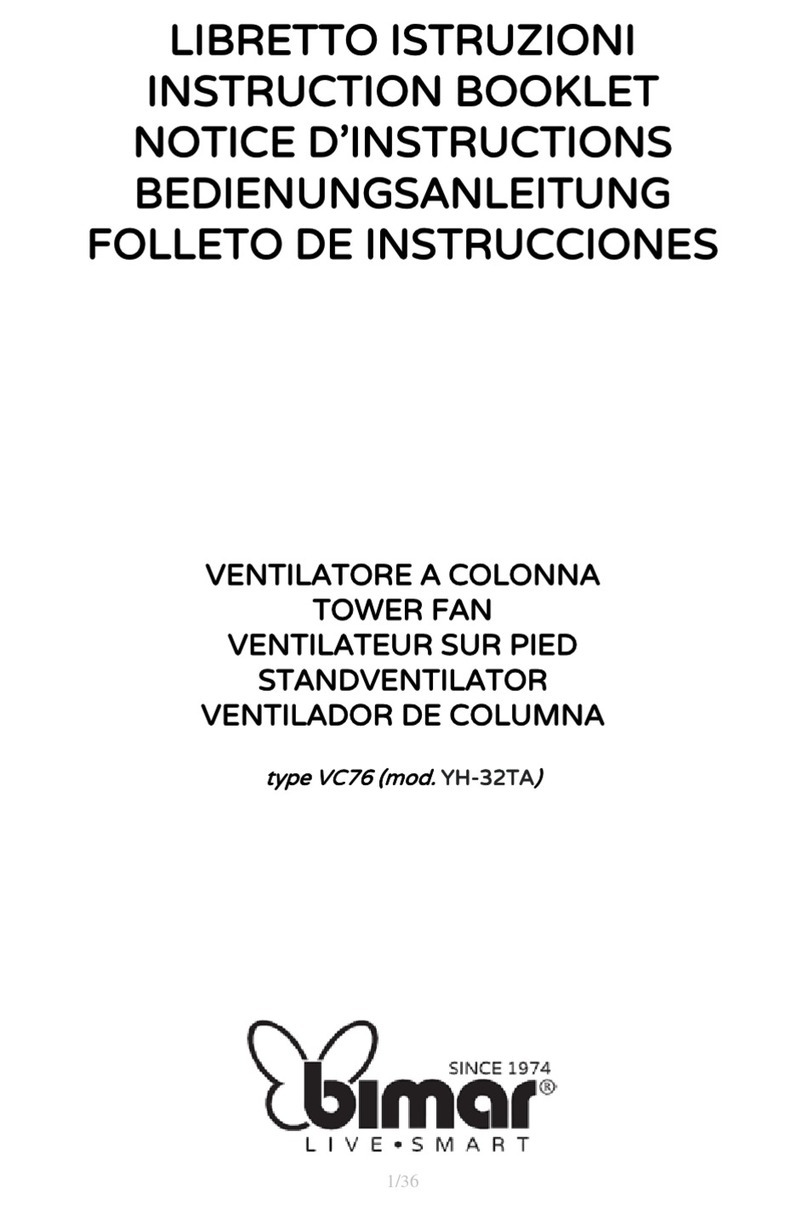
9
risk of fire, since a fire risk exists if the heater is covered or
positioned incorrectly.
•In the event of a breakdown or poor operation, turn the fan
heater off and ask for professionally qualified help: repairs made
by unqualified persons can be dangerous and render void the
warranty.
•After removing the packing materials, check the integrity of the heater; if you are unsure,
do not use it and ask for qualified professional help. The packing materials (plastic bags,
polystyrene foam, nails, etc.) must be kept out the reach of children because they are
potential sources of danger.
: any stickers or advertising material applied to the
grid removed before using the appliance. The manufacturer declines all responsibility in
case this is not safe working practices will be respected.
•Before connecting the appliance, check that the voltage shown on the data plate matches
that of your electricity and that the electric plug is grounded. In the event of incompatibility
between the electric outlet and the plug of the appliance, have the outlet replaced with
another more suitable type by professionally qualified personnel, who will make sure that
the section of the wires of the outlet is appropriate for the absorbed power of the appliance.
In general, the use of adapters or extension cords is not recommended; if their use is
indispensable, they must conform to existing safety standards and their current capacity
(amperes) must not be less that the maximum of the appliance.
•The power socket must be easy to reach so the plug can be removed quickly in case of
emergency.
•Do not place the fan on a shelf and/or near sinks or other container of liquids (minimum
distance of 2 meters) to avoid the risk of it falling in.
•Keep the fan far away from fabrics (curtains, etc.) or unstable materials that could obstruct
the air intake grille; make sure that the front is free of unstable materials (dust, etc.).
•Make sure that the electric cord is not touching rough, hot or moving surfaces and not
twisted or wrapped around the appliance.
•Stand the appliance on a horizontal, flat surface or table; do not stand on a inclined plane
(the appliance could upset).
•Do not place the appliance near an open flame, cooking or other heating appliance.
•The appliance must only be used if secured to a wall: the wall must be flat, smooth, very
stable (as the appliance could tip over) and resistant.
•Position the appliance far from other sources of heat, inflammable materials, curtains,
carpets, etc., inflammable gases or explosive materials (spray cans).
•If the appliance is fitted to a wall, the same must be made of masonry and/ or of resistant
material (not of wood or synthetic material); follow the indications below for installation:
-The wall fan must be installed at least 2 m above the floor (below picture)
-Fix two hooks to the wall (at a distance, below picture n.3), make the holes on the wall,
inserting the hooks into the slots provided with screws.






